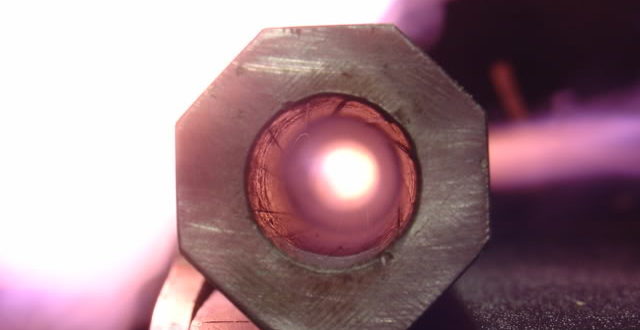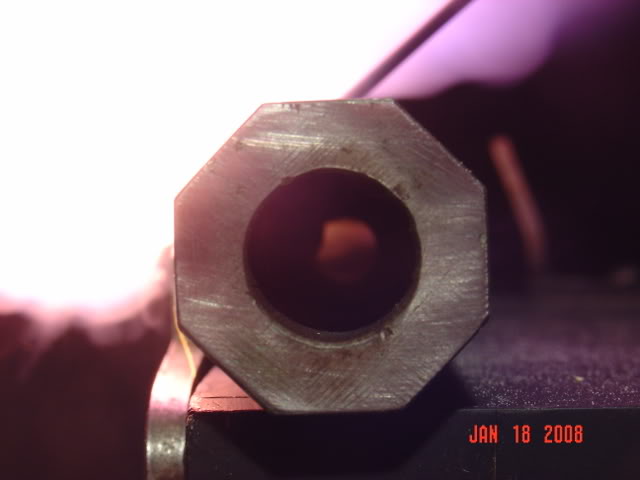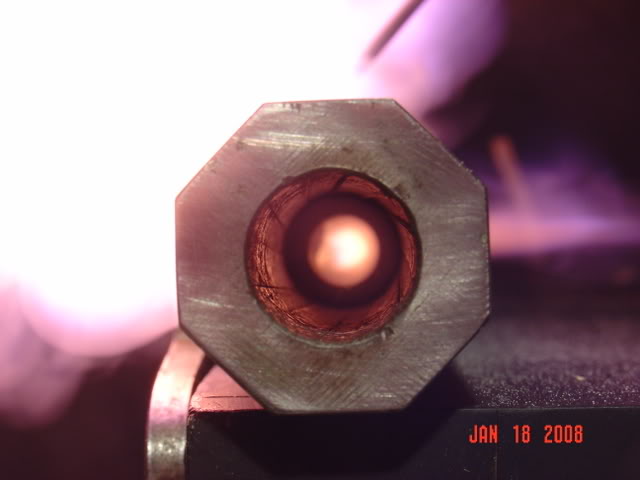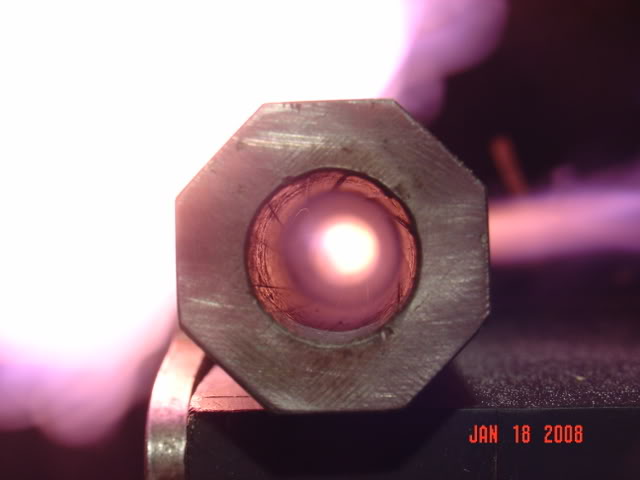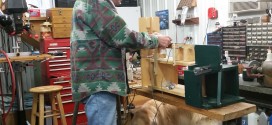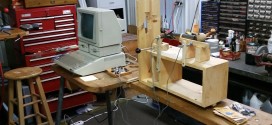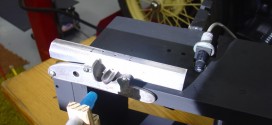Comparing the strength of the black powder burn by looking through the barrel muzzle. Here we see that where the black powder is placed in a flintlock pan is crucial.
In this phase I used a digital camera to photograph the fire coming through the vent. The barrel is mounted on a fixture and the camera installed on the tripod. Height was adjusted until the camera looked directly into the muzzle. In this position the barrel in centered in the camera and the pan is to the left. On the right side of the barrel directly opposite the vent is a cleanout hole. (The cleanout is important as you view the photos.)
The pan was primed with .5 grain of Swiss Null B priming powder in three pan positions: banked to the outside, close to the vent, and as close as possible without blocking the vent. The pan powder was carefully positioned using a pencil with a round eraser. Since the eraser was the same shape as the pan bottom, this worked very well.
The camera was set to have the shutter open for 4 seconds. Once the pan was primed, the procedure was to fire the camera and then ignite the pan. The pan was ignited as earlier with a red hot copper wire. (There is NO barrel powder used until the last phase.)
Photo 1 shows the muzzle shot taken with .5 gr of Swiss Null B priming powder banked away from the vent.
Photo 2 shows the muzzle shot taken with .5 gr of Swiss Null B priming powder positioned close to the vent.
Photo 3 shows the muzzle shot taken with .5 gr of Swiss Null B priming powder positioned as close to the vent as possible without covering it.
Examination of the photos add evidence for stronger ignition with closer placement of the pan powder. Comparing the photos showing the close position and the “banked away” position shows a clearly stronger fire in the barrel and also traveling through the cleanout hole on the far side. While evidence continues to support a close priming of the pan, only timing of the positions will provide conclusive proof. That comes next.
Pan Vent Experiments — Introduction
Part 1 — Black Powder Ignition Characteristics
Part 2 — Initial Pan Experiments
Part 4 — Priming Powder Amount by Weight
 BlackPowderMag.com Flintlock Rifles and Black Powder Guns
BlackPowderMag.com Flintlock Rifles and Black Powder Guns
